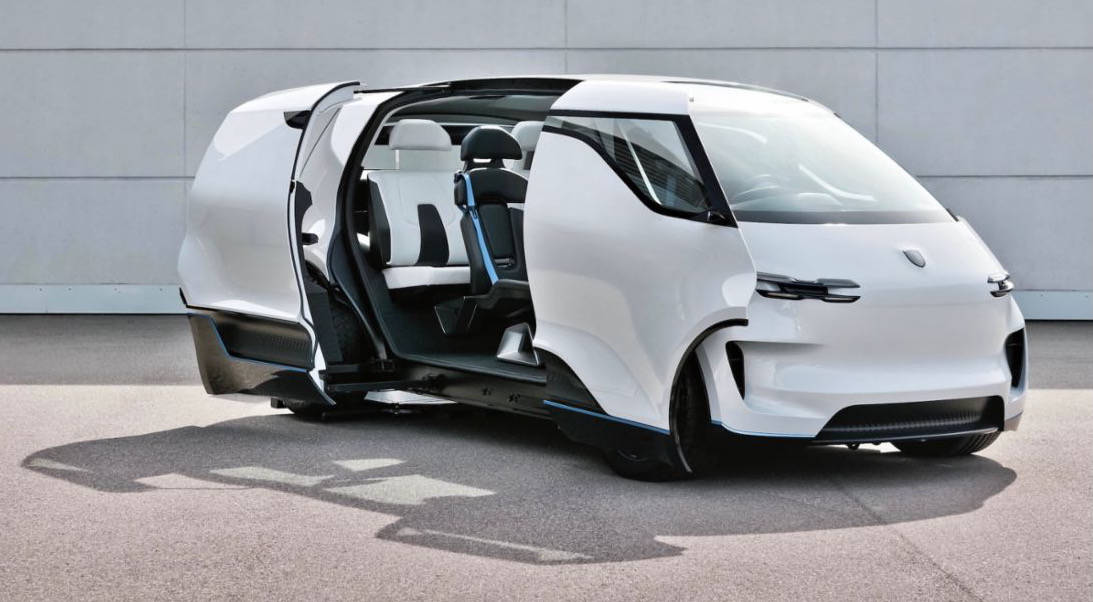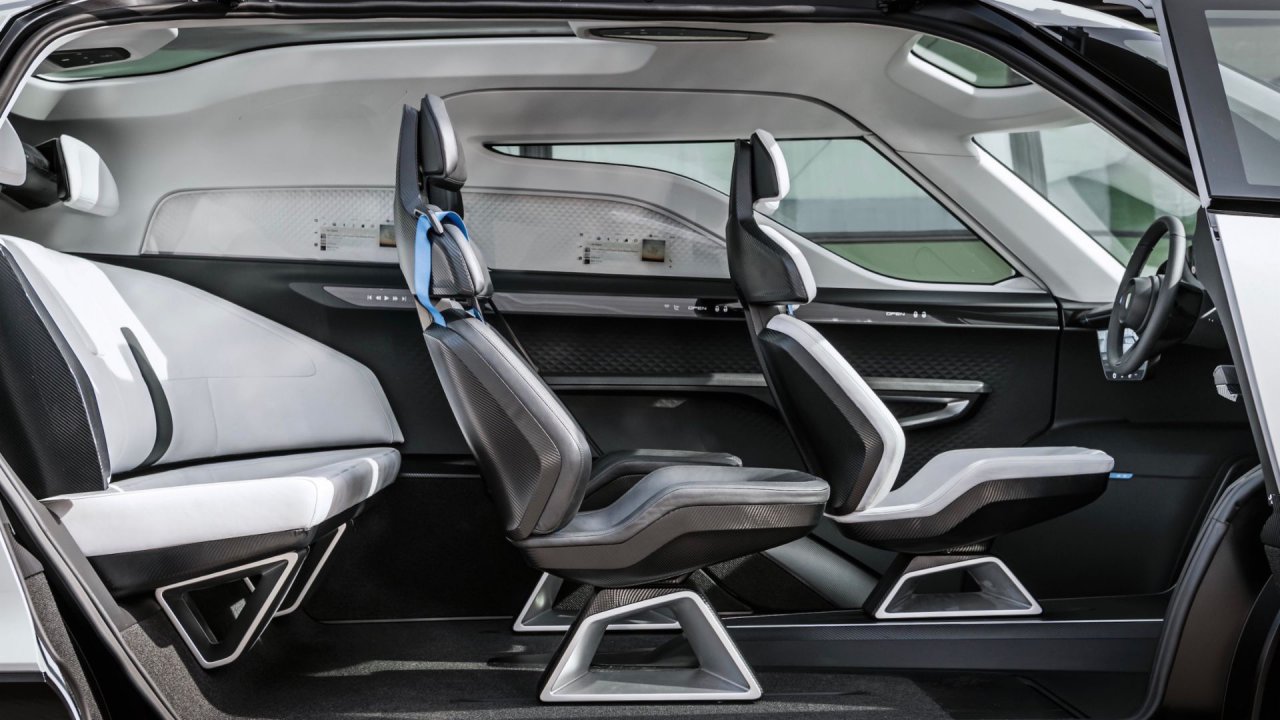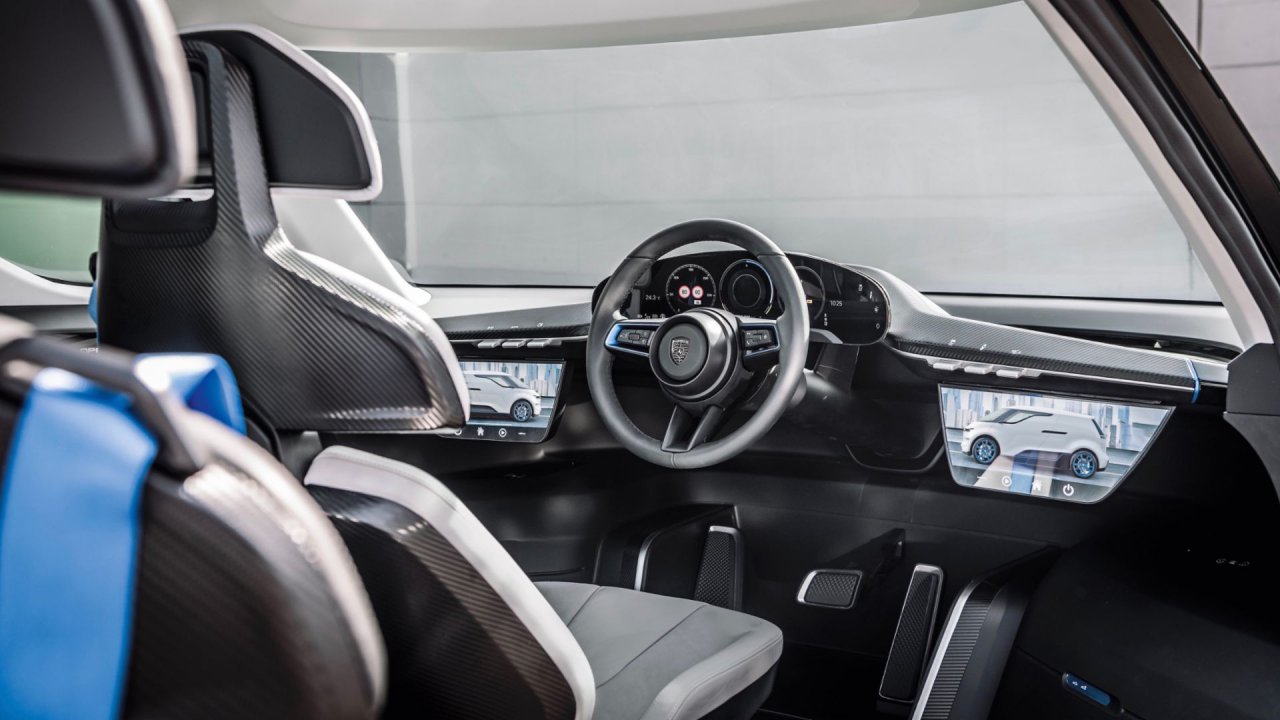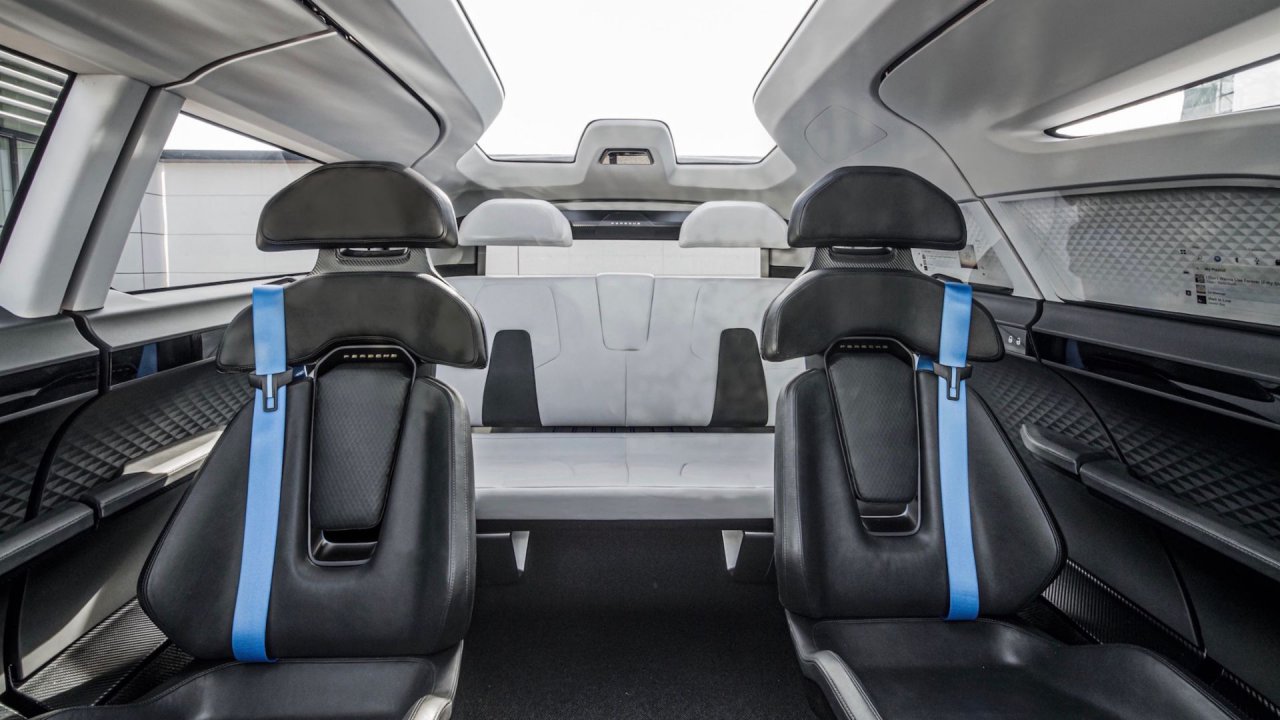What if Porsche designed a minivan?
Actually, that’s not a hypothetical question because it actually happened, and in the fall of 2020, the German automaker included images of the exterior of the Renndienst, a racy transporter, in Porsche Unseen, a book revealing a variety of vehicle proposals from its design studio.
This week, Porsche revealed the Reendienst interior under the headline: “Inner Life — the interior of the future | What can Porsche drivers expect from the interior of the future? A vision of the day after tomorrow.”

“To shape the future, Porsche designers cross boundaries,” the company said. “They take the best from traditions and origins – the brand essence, the values that have made the company successful. At the same time, they boldly add something new. To do so, they study people and their habits in general and Porsche drivers in particular.”
“In the past, we used to type our destination into the navigation system before a journey,” noted explained Ivo van Hulten, Porsche’s director of user experience design. “Today, we prepare the route on our smartphones while sitting on the sofa, and then send it to the car.”
Van Hulten thinks “the possible” has been taken for granted.
“With chief designer Michael Mauer and Markus Auerbach, head of interior design, van Hulten experiments every day with what will meet these needs in a few years’ time,” Porsche says. “The designers keep their minds fresh with the ‘first-principle thinking’ method. In doing so, they move away from familiar analogies and break hypotheses down into their smallest components. They focus not on familiar forms but on functions that might be of interest in the future.
“They ask themselves what a Porsche could be – and what it could not be. This process provides answers to questions that no one has asked before.”

With the Renndienst concept van, Style Porsche designers look to the day after tomorrow, asking how far they can expand Porsche’s design language. For Renndienst, it expands into a family friendly minivan for six people.
“We thought about how we could still give a distinctly Porsche flair to a passenger compartment that is so far removed from the classic sports car interior. And how autonomous driving could be designed,” Mauer is quoted.
“We don’t assume that our customers want to give up using a steering wheel,” Mauer added. After all, Porsche points out, its sports cars are a symbol of self-determination.
In the minivan, Porsche puts the driver in a central position.
“When I want to drive,” Mauer said, “I have more cockpit feeling than in any other car. And when I don’t, the driver’s seat can be rotated 180 degrees – with one swivel, it turns to face the other passengers.”
The overall interior design is dedicated to the digital lifestyle and the smartphone generation. Van Hulten said the design was done from the inside out. For example, the side windows are designed asymmetrically.
“One side is closed; passengers can retreat there,” Auerbach explained. “The other side enjoys a large window bank for an unobstructed view outside. When we close the doors, the interior feels like a protective capsule.”
The passengers in the first row sit offset to the right and left of the driver and have their own dashboard screens. The back row seat bench style, resembling lounge seating.
“It is a particularly communicative area that invites relaxation, offering alternative seating positions for talking, working, and relaxing,” said Auerbach.
Porsche notes that the interior space is more adaptable because of electric powertrain is hidden away in the vehicle’s underbody.
“In the past,” van Hulten said, “the hunger for something new was satisfied with the purchase of the product. Today, many young people are no longer just fascinated by the aesthetics of a product, but by the opportunities it offers them.
“The questions are: Is the interior modular enough to adapt to changing circumstances even a few years after purchase? Will I be able to run updates remotely and around the clock?”
Auerbach adds: “A digital journey can open a gateway to a universe for us, but it can never replace the physical experience. A car is a space that moves whether I’m driving it myself or not. The seats in this van have been designed for movement; they hold and support the body.”
The interior also features materials from renewable resources, including wood. Also used are “smart materials” that Porsche says can “do something special — for example, respond to external factors and light up without being directly illuminated. Or materials that repeatedly change their shapes to perfectly fit the ergonomics of the occupants.”
“Seen from the outside, a Porsche is a sculpture, a work of art. The interior adds another dimension,” Auerbach explains. “Cars with an unsatisfactory interior do not survive for long, because no emotional connection can be built with them.”
As for van Hulten, his next goal is to install the Renndienst with a soul.
“He remembers the American TV series Knight Rider, which he enjoyed watching as a child,” Porsche reports.
“K.I.T.T., the talking car, fascinated me,” said van Hulten. “The strong team of the protagonist and his vehicle really captured my imagination. I connected with the car because it had a soul.
“What kind of daily interactions do we plan in 30 years?” he added, “Will we call our car and then it will come around and pick us up?”
As Porsche notes, “From this grand vision of the day after tomorrow, the design team is now moving backwards in time to get the specific answer for tomorrow.”








